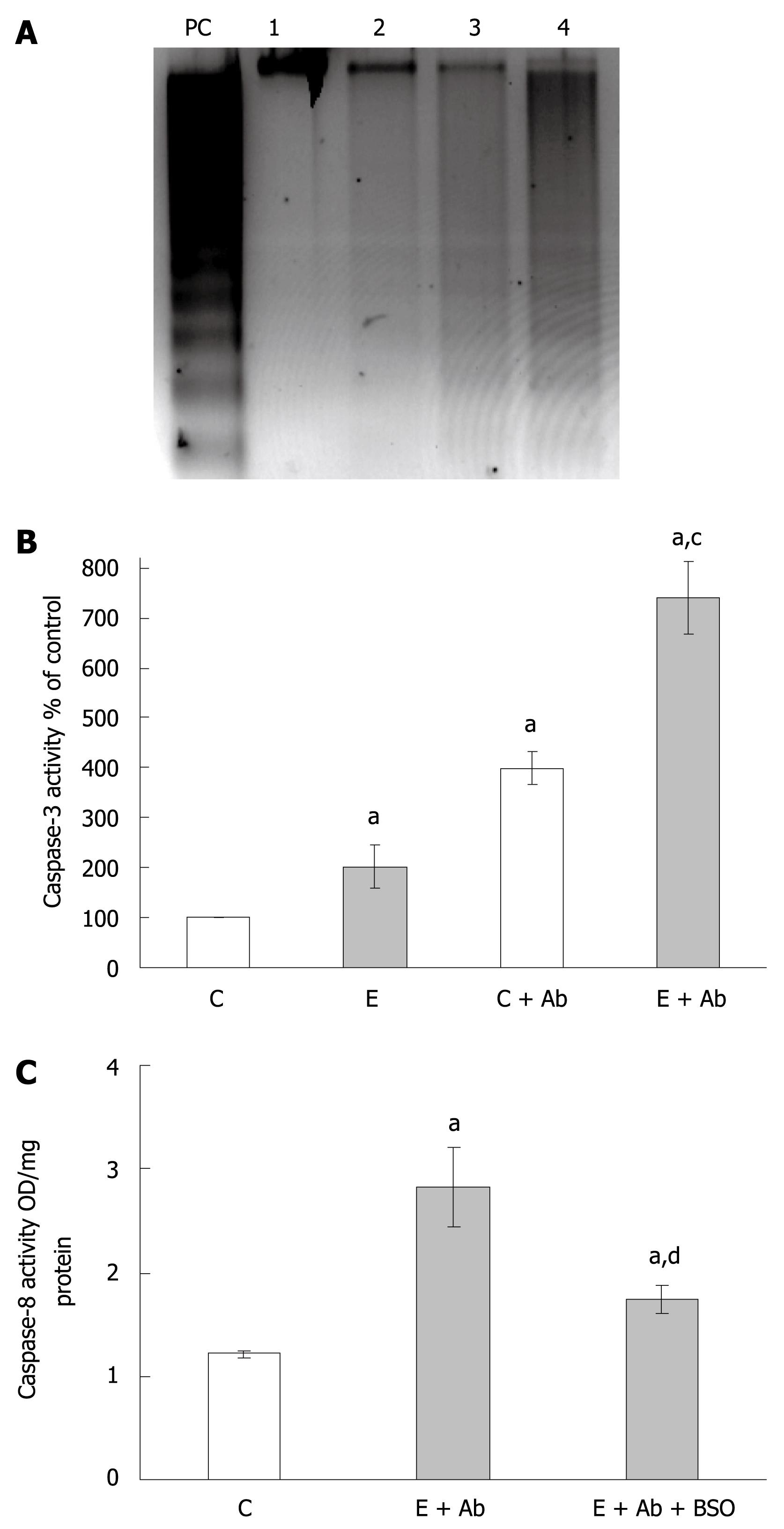Copyright
©2009 The WJG Press and Baishideng.
World J Gastroenterol. Jun 7, 2009; 15(21): 2609-2616
Published online Jun 7, 2009. doi: 10.3748/wjg.15.2609
Published online Jun 7, 2009. doi: 10.3748/wjg.15.2609
Figure 4 Fas-mediated apoptosis following ethanol administration and the effects of BSO treatment.
A: Representative gel depicting apoptosis identified by DNA fragmentation. WIF-B cultures were left untreated or treated with 25 mmol/L ethanol for 24 h prior to challenge with anti-Fas antibody/Act D (Ab) for 16 h. The samples represented are untreated control cells (lane 1), ethanol alone-treated cells (lane 2), control cells incubated with Ab (lane 3), and ethanol-treated cells incubated with Ab (lane 4). UV-treated WIF-B cells were used as a positive control (lane PC); B: The analysis of caspase-3 activation following Fas antibody treatments. WIF-B cells were cultured for 24 h in the absence and presence of ethanol followed by the additional overnight incubation with Ab as described above. The activity of caspase-3 was assayed in four independent experiments as previously described; C: The effect of glutathione depletion by BSO on caspase-8 activation. WIF-B cultures were treated with ethanol and Fas antibody with or without the inclusion of BSO. The activity of caspase-8 was determined in three independent experiments as described in “Material and Methods”. aP < 0.05 vs untreated control cells; cP < 0.05 vs corresponding controls; dP < 0.05 vs cells treated with ethanol plus Ab.
- Citation: McVicker BL, Tuma PL, Kharbanda KK, Lee SM, Tuma DJ. Relationship between oxidative stress and hepatic glutathione levels in ethanol-mediated apoptosis of polarized hepatic cells. World J Gastroenterol 2009; 15(21): 2609-2616
- URL: https://www.wjgnet.com/1007-9327/full/v15/i21/2609.htm
- DOI: https://dx.doi.org/10.3748/wjg.15.2609









